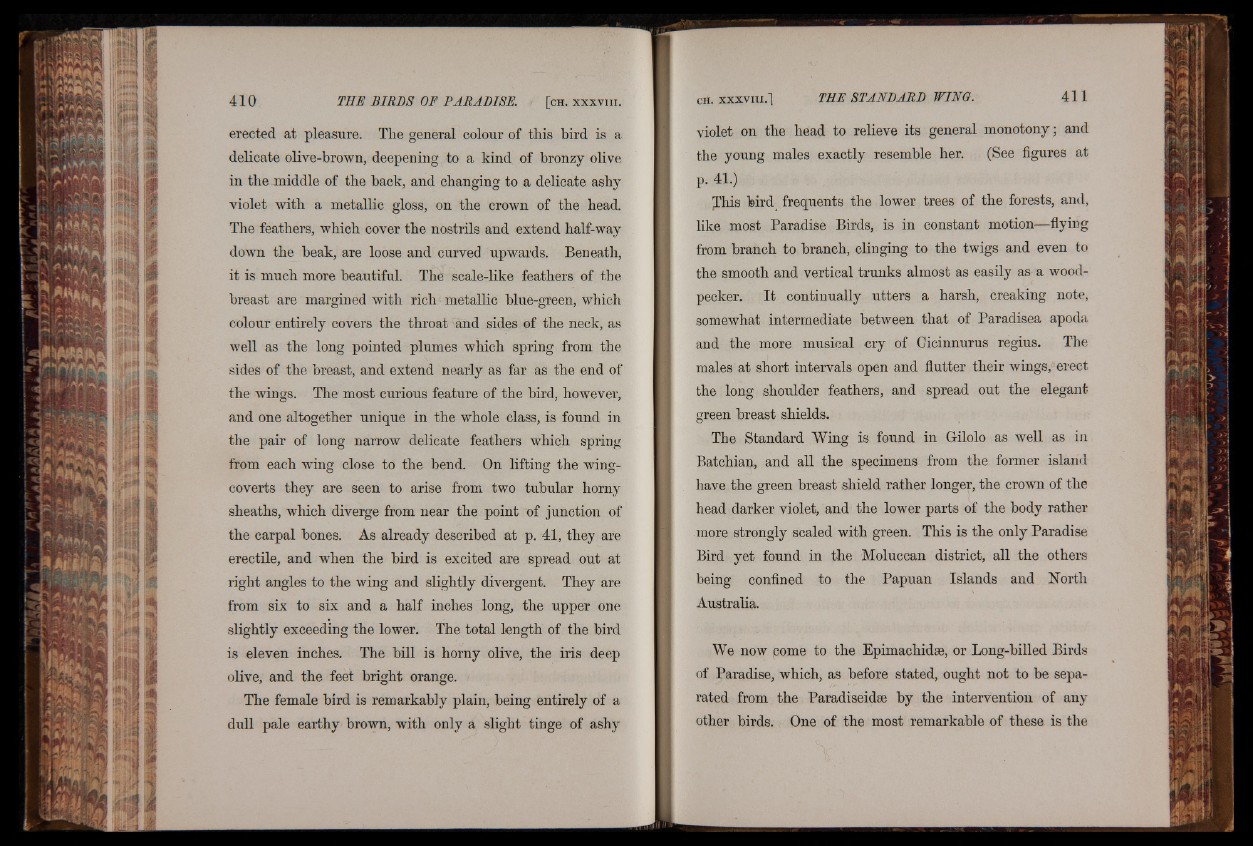
erected at pleasure. The general colour of this bird is a
delicate olive-brown, deepening to a kind of bronzy olive
in the middle of the back, and changing to a delicate ashy
violet with a metallic gloss, on the crown of the head.
The feathers, which cover the nostrils and extend half-way
down the beak, are loose and curved upwards. Beneath,
it is much more beautiful. The scale-like feathers of the
breast are margined with rich metallic blue-green, which
colour entirely covers the throat and sides of the neck, as
well as the long pointed plumes which spring from the
sides of the breast, and extend nearly as far as the end of
the wings. The most curious feature of the bird, however,
and one altogether unique in the whole class, is found in
the pair of long narrow delicate feathers which spring
from each wing close to the bend. On lifting the wing-
coverts they are seen to arise from two tubular horny
sheaths, which diverge from near the point of junction of
the carpal bones. As already described at p. 41, they are
erectile, and when the bird is excited are spread out at
right angles to the wing and slightly divergent. They are
from six to six and a half inches long, the upper one
slightly exceeding the lower. The total length of the bird
is eleven inches. The bill is horny olive, the iris deep
olive, and the feet bright orange.
The female bird is remarkably plain, being entirely of a
dull pale earthy brown, with only a slight tinge of ashy
violet on the head to relieve its general monotony; and
the young males exactly resemble her. (See figures at
p. 41.)
This bird frequents the lower trees of the forests, and,
like most Paradise Birds, is in constant motion—flying
from branch to branch, clinging to the twigs and even to
the smooth and vertical trunks almost as easily as a woodpecker.
It continually utters a harsh, creaking note,
somewhat intermediate between that of Paradisea apoda
and the more musical cry of Cicinnurus regius. The
males at short intervals open and flutter their wings, erect
the long shoulder feathers, and spread out the elegant
green breast shields.
The Standard Wing is found in Gilolo as well as in
Batchian, and all the specimens from the former island
have the green breast shield rather longer, the crown of the
head darker violet, and the lower parts of the body rather
more strongly scaled with green. This is the only Paradise
Bird yet found in the Moluccan district, all the others
being confined to the Papuan Islands and North
Australia.
We now pome to the Epimachidae, or Long-billed Birds
of Paradise, which, as before stated, ought not to be separated
from the Paradiseida3 by the intervention of any
other birds. One of the most remarkable of these is the
ill